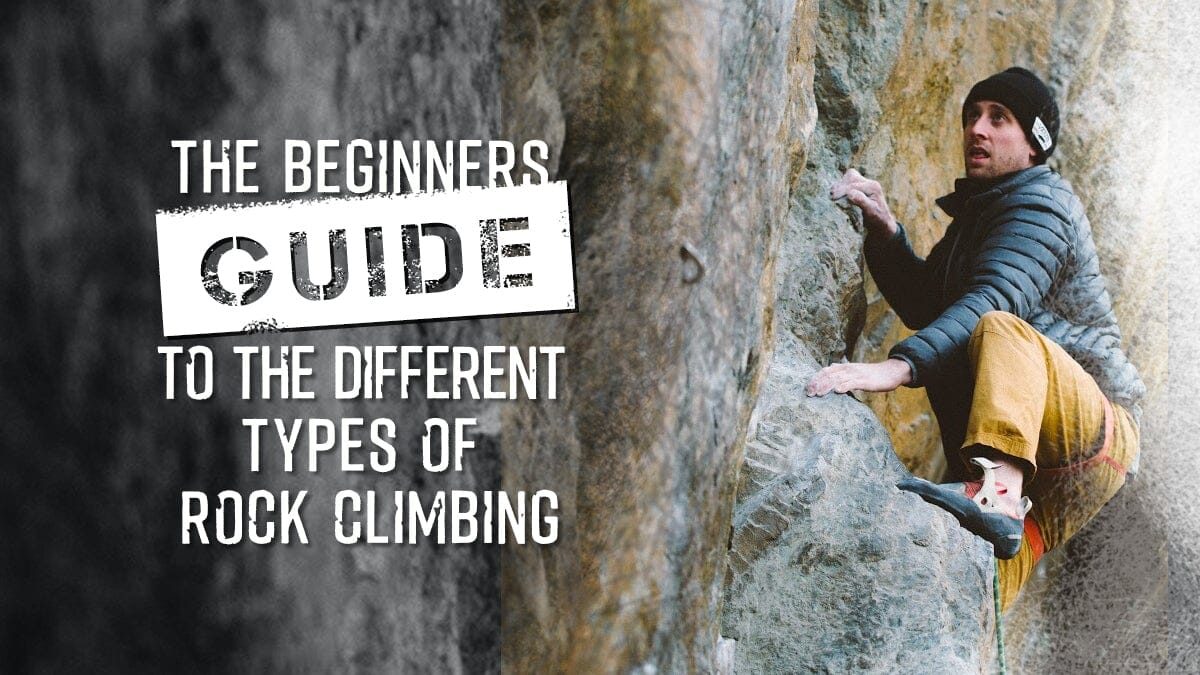The Beginners Guide to Different Types of Rock Climbing

The rock climbing industry is growing, and you should give it a try while you can!
Over 5 million Americans have been indoor rock climbing in the past year, and with good reason! It’s fun, it keeps you in good shape, and it immerses you in a whole new community.
So what are the different types of rock climbing? Let’s find out!
The Different Types of Rock Climbing Explained
Whether you are inside or outside, there are a few styles of rock climbing with varying degrees of intensity, perceived exposure, and required skill. Here are a few of the most popular types:
Bouldering
Bouldering is rock climbing on a short wall or rock face without a rope. It is more dangerous than options that involve a rope, so don’t start on the highball boulders you see the pros climbing. Find a guidebook, check out Mountain Project for beta, or get with knowledgeable friends to show you around (you should have spotters anyway).
Climbing without a rope is dangerous no matter how high the wall is. Most rock climbing gyms will have safety classes where they explain safety for bouldering more than on a top rope routes. It is important to learn how to fall properly and to have spotters, which we define below.
It is best to have four things when bouldering: a crash pad, a spotter, chalk and climbing shoes:
A crash pad is necessary to give you a soft spot to land if you fall. There are numerous options available.
A spotter is somebody you trust to stay behind you while climbing, but they should not be there to catch you. They are there to make sure that you don’t land in an awkward position or do anything dangerous while climbing.
Climbing shoes are selected based on experience, climbing style, and the terrain to be climbed. A great first pair of climbing shoes is a flat lasted option rather than a more aggressive downturned shoe. We suggest the Butora Endeavor or the Advance.
Top Rope Climbing
This is the most popular form of climbing, and can be found at most rock climbing gyms. A top rope can also be set up at the crag where a leader rigs a top rope for fellow climbers in her party, or where the top of the route is accessible by hiking to rig the system.
A top rope system includes a belayer using simple device such as an Air Traffic Controller (ATC) or a GRIGRI attached to the harness of the belayer on the ground below the climber. The device hooks to a rope that attaches to an anchor at the top of the wall and then down to the climber on the other end.
It is crucial that the climber and belayer have proper communication established for climbing in order to ensure that both are on the same page.
The belayer will constantly pull slack from the rope as the climber progresses to keep up with the climber’s pace and lock it so they can let you down slowly.
Lead Climbing
There are two types of lead climbing traditional or trad climbing and sport climbing.
When lead a route, the leader attaches the rope to protection, either with cams and nuts in trad climbing or with quickdraws in sport climbing, such that she can only fall as far as her last piece of protection when the belay system will stop her fall.
Leading is usually reserved for climbers that have attained a higher level of experience and confidence in their ability. If you feel like you are ready to start leading, many gyms offer lead climbing classes or you can hire a certified mountain guide to provide instruction when learning to lead.
Free Solo
We will only mention it because you may have arrived here after watching the documentary.
Let’s start out by saying: Never do this. Free soloing is the most dangerous method of climbing. It has become a very popular topic in the past year due to the high praise of Free Solo, the Academy Award winning documentary about Alex Honnold free soloing El Capitan. However, this is not a very popular discipline in the climbing community due to the inherent risk of…well…certain death.
Next Steps
If you like any of these types of rock climbing, head to the gym, find a guide, or hit up your climber friends and get started!
Know what to expect first. Check out the most common beginner climbing mistakes on our blog.




